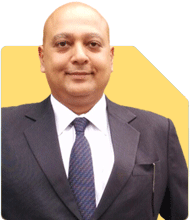Vivek Lala |274 Answers |Ask -Follow
Tax, MF Expert - Answered on Jul 09, 2024
Lala cleared his chartered accountancy exam in 2018 and completed his articleship with Chaturvedi and Shah. ... more

Hi, I want to understand about SWP mutual fund plan. Lumpsum Amount - 50 lakhs Why SWP- My mother dont get pension so using this amount she get monthly income. Investment duration- Atleast 15 or 20 years. Withdrawal amount - 40000. Her age- 52 years Please help me in clearing below doubts. 1. Best SWP mutual fund. 2. In detail explanation with calculation? 3. What will be STCG and LTCG taxs whenever units are sold every month? 4. How many years the Withdrawal can be done? I have taken health insurance for my mother 10 lakh.
The swp as per the last 20yrs data, shows that the swp easily continue for the next 20yrs and create a decent corpus at the end of 20yrs
The portfolio creation should be balanced to agressive as the duration of the investment is 15yrs plus
The portfolio can be as follows :
Mid cap - 20%
Small cap - 20%
Multicap - 30%
Large and mid cap - 30%
The STCG LTCG will be as per the gains
Let me know if you have any more doubts or views on my LinkedIn profile :
https://www.linkedin.com/in/ca-vivek-lala-21a2038b?utm_source=share&utm_campaign=share_via&utm_content=profile&utm_medium=android_app
Remember that past performance is not a guarantee for future returns, and it's always important to review your investments periodically to ensure they remain aligned with your financial objectives.
You may like to see similar questions and answers below
Ulhas Joshi |271 Answers |Ask -Follow
Mutual Fund Expert - Answered on Apr 05, 2024
Ramalingam Kalirajan |5983 Answers |Ask -Follow
Mutual Funds, Financial Planning Expert - Answered on Apr 30, 2024
Ramalingam Kalirajan |5983 Answers |Ask -Follow
Mutual Funds, Financial Planning Expert - Answered on May 11, 2024
Ramalingam Kalirajan |5983 Answers |Ask -Follow
Mutual Funds, Financial Planning Expert - Answered on Aug 05, 2024
Nayagam P P |3474 Answers |Ask -Follow
Career Counsellor - Answered on Aug 22, 2024
Sushil Sukhwani |504 Answers |Ask -Follow
Study Abroad Expert - Answered on Aug 22, 2024
Radheshyam Zanwar |604 Answers |Ask -Follow
MHT-CET, IIT-JEE, NEET-UG Expert - Answered on Aug 22, 2024
Dr Karthiyayini Mahadevan |1023 Answers |Ask -Follow
General Physician - Answered on Aug 22, 2024
Sushil Sukhwani |504 Answers |Ask -Follow
Study Abroad Expert - Answered on Aug 22, 2024
Sushil Sukhwani |504 Answers |Ask -Follow
Study Abroad Expert - Answered on Aug 22, 2024
Radheshyam Zanwar |604 Answers |Ask -Follow
MHT-CET, IIT-JEE, NEET-UG Expert - Answered on Aug 22, 2024
Radheshyam Zanwar |604 Answers |Ask -Follow
MHT-CET, IIT-JEE, NEET-UG Expert - Answered on Aug 22, 2024
Ramalingam Kalirajan |5983 Answers |Ask -Follow
Mutual Funds, Financial Planning Expert - Answered on Aug 22, 2024
Ramalingam Kalirajan |5983 Answers |Ask -Follow
Mutual Funds, Financial Planning Expert - Answered on Aug 22, 2024


























